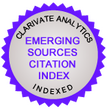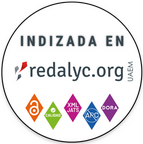Defining Spaces of Creative Educational at Management Higher Education Through a Value Creation Mechanism
DOI:
https://doi.org/10.13058/raep.2019.v20n2.1340Keywords:
Value co-creation, Educational creative space, Educational innovation, Higher education, Focus Group.Abstract
The research goal was to identify the elements and form of creative educational spaces from the perspective of the main actors involved in the context of higher education in management. The study is based on three theoretical aspects: value co-creation, creative spaces of education and, educative innovation. The methodology was exploratory and qualitative, that performs a process of value co-creation using the Focus Group technique with an intentional sampling of teachers, students, employee, and head department of a Brazilian university. The results indicate alignment with the approaches of educative innovation and creative spaces regarding institutional innovation structural and didactic. The ideal model of creative education space co-created by the group maintains similarity with the coworking spaces and organizational structures of non-traditional firms. A consensus among teachers and students considered the current classrooms, used in most universities, as outdated and, discouraging of creativity for both educators and students and should be rethought on pain of being one of the points generated from school dropout. The creative space of education was associated with the interaction, technologies, functionalities, gamification and creative leisure.Downloads
Downloads
Published
How to Cite
Issue
Section
License
By publishing a manuscript in the journal Administração: Ensino e Pesquisa (RAEP), the authors declare that the work is of their exclusive authorship and therefore assume full responsibility for its content. The authors grant RAEP a non-exclusive rights license to use the work in the following ways:
(1) Sell and / or distribute the work in hard copies or electronic format.
(2) Distribute parts of the work as a whole to promote the journal through the internet and other digital and printed media.
(3) Record and reproduce the work in any format, including digital media.
Authors and readers are permitted to share the material, use it in classes, for presentations and also for other purposes, and to create new knowledge based on any RAEP publication, as long as the due credit is attributed to the original work and the respective author(s), through citations, references, and other means.
The journal adopts preventive measures to identify plagiarism using software designed for this purpose.
RAEP does not charge authors for the article submission nor for the publishing of approved articles.
In line with the journal's policies, each published article will be given a Creative Commons CC-BY 4.0 license.










